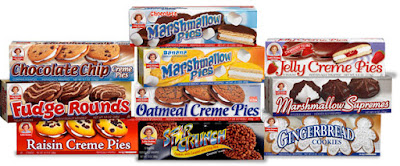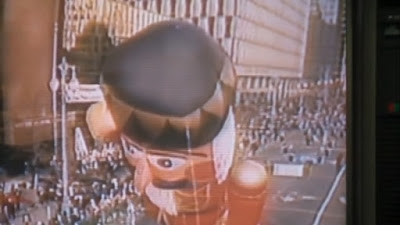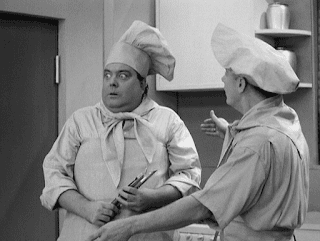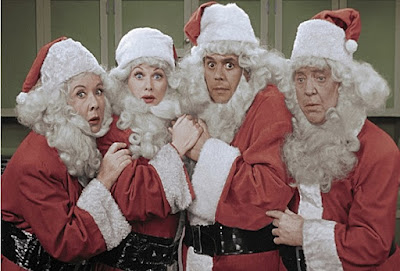To be honest, I've been looking forward to this one all year. I'm pretty proud of my Elvira coverage over the past few years on this here little website, and if you'd like, you can go back and read past articles about the Mistress of the Dark in my "Collections" section found at the top of the site.
My previous articles have gone quite in-depth and I've written some lengthy, information-packed articles regarding Elvira, whether it be her exploits in the world of professional wrestling, movies, Coors Beer, or Fox's Halloween Bash.
A small percentage of you are out there asking yourself, just who is this Elvira he's talking about? Well, I'll tell you.
Cassandra Peterson grew up in Manhattan, Kansas, and moved to Las Vegas at 17 to become a showgirl at The Dunes casino. 10 years later, in 1979, after spending time touring Europe, she moved to Los Angeles to join the famed improvisational comedy group, The Groundlings. During her time with The Groundlings, she created and developed the "valley girl" character that would later morph into her most famous role, "The Mistress of the Dark," Elvira.
In 1981, Peterson answered a casting call to replace the long-time host Sinister Seymour (Larry Vincent) on a Los Angeles-based weekend horror movie television show called Fright Night. Producers allowed her to create her own image for the role, and using the "valley girl" character from The Groundlings, she made the campy, sexy vampire character now known worldwide as Elvira.
Fright Night would become Elvira's Movie Macabre and was practically an overnight success... at least locally. Elvira the character would eventually evolve from a popular local figure to a lucrative worldwide brand. She quickly sold Halloween costumes, comic books, action figures, trading cards, and more. Her popularity peaked when, in the late 80s, she appeared as the spokesperson for the Coors beer company. In 1988, she also wrote and starred in a full-length feature film Elvira: Mistress of the Dark, cementing herself as a global name.
After several years of attempts to make a sequel to Elvira: Mistress of the Dark, Cassandra and her manager (and then-husband Mark Pierson) decided to finance a second movie themselves. In July 2002, Elvira's Haunted Hills officially premiered in Hollywood.
In the years since, Elvira has revived her Movie Macabre tv show, created a cartoon, and performed as a spokesperson for various products.
Just as Elvira's popularity surged due to the release of Mistress of the Dark, urban legends about satanic cults began sweeping the nation. Suburban housewives and the ratings hungry news-media started spreading stories that cults were abducting and poisoning children at alarming rates in the woods surrounding suburban homes.
The very religious Coors family worried their company would become a target of early cancel culture due to these cult rumors and their "Mistress of the Dark" spokeswoman. Despite its unbelievable success, Coors killed the Elvira ad campaign right before Halloween in 1988.
It just so happened shortly thereafter that the soda giant Pepsi had recently launched two new brands of soft drinks and was looking for a celebrity to boost their market awareness. Along with a partnership with Universal Studios that lasted several Halloweens, Pepsi turned to Elvira to launch their new campaign.
With this brief partnership with Pepsi at the end of the 1980s, she created a pair of memorable commercial that combines soda, an iconic Alfred Hitchcock movie, and classic Halloween monsters.
Let's take a deeper look, shall we?
Mug Root Beer was initially introduced in 1940 under the name Belfast Root Beer by the San Francisco, California-based Belfast Beverage Company. Belfast, best known for making ginger ale and sparking water since 1877, was purchased in 1925 by New Century Beverage Company. New Century had previously launched a successful soda brand, Crush, in 1918.
In 1936, New Century gained permission to bottle and franchise Pepsi-Cola products. In the 1950s, the soda took on the name Belfast Old Fashioned Mug Root Beer. The tongue-twister of a name was officially shortened to simply Mug Root Beer a few years later.
In 1986, Pepsi purchased New Century and replaced its own root beer, On-Tap Draft, with Mug. Mug became Pepsi's flagship root beer brand.
Two years prior, in 1984, PepsiCo introduced a line of fruit-flavored sodas called Slice to replace the failing "Teem" brand. The original Lemon Lime Slice was introduced as a competitor of Sprite and 7-Up, but it differed in that it contained 10% fruit juice. In 1986, the line was expanded with Mandarin Orange, Apple, and Cherry Cola flavors under the tagline "We got the juice."
Slice was a big success upon release, inspiring other juice-infused drinks, such as Coca-Cola's Minute Maid orange soda and Schweppe's Sunkist Orange soda. Slice, by May 1987, held nearly 3.5 percent of the soft drink market, but by June 1988, it had fallen to 2 percent. In an effort to right-size the brand, Apple and Cherry flavors were discontinued, and the juice content was reduced (with packaging now saying "with fruit juices" instead of "10% fruit juice.")
When Elvira and Coors parted ways in 1988, she didn't have to wait long before signing a new deal with Pepsi. For the Halloween season in 1989, Pepsi teamed up with Universal Studios to use their classic "Universal Monsters" likenesses for a new ad campaign to prop up their new soda brands.
In her 2021 autobiography, "Yours Cruelly, Elvira: Memoirs of the Mistress of the Dark," Elvira wrote that while Coors may have been afraid of any negative publicity surrounding her character, "Pepsi was a company that obviously had no fear of the dark side... They came along and turned my frown upside down."
She goes on to say that Pepsi was more than pleased to pay her double to promote Mandarin Orange Slice and Mug Root Beer, compared to what she earned over at Coors. Pepsi also invested heavily in the advertisements, developing the brand's largest-ever promotion to date.
Throughout 1989 and even into 1990, Elvira was featured in newspapers, radio and television commercials promoting the "Go Psycho with Elvira" contest. Folks who purchased Slice or Mug Root Beer received a chance to win a trip out to Hollywood and Universal Studios for a "ginormous party" in the Psycho house, known as "The Monster's Bash." The classic cardboard cutout "standees" produced by Pepsi appeared everywhere during that time in grocery or convenience stores and gas stations.
As a kid, I can remember seeing these Elvira lifesize cardboard cutouts in the gas station in town. That was back in the day before you could pay at the pump and you'd have to run into the convenience store and pay cash before you put the gas into your car. Admittedly, these standees aren't as memorable as the Coors ones were (or would be to us 30 years later,) but they were pretty darn good!
As Elvira said in her memoir, the Pepsi version of advertisements "showed a lot more skin than the Coors version, even though I'm pretty sure Pepsi products are alcohol-free!"
Using the partnership with Universal Studios to its fullest, Pepsi shot the commercial at the Universal Hollywood Studio Lot, using the iconic Psycho house from the 1960 Alfred Hitchcock thriller. Two different commercials made it to television airwaves, using several of the same sequences.
Both commercials open with The Mistress of the Dark in front of the iconic Psycho house. Elvira invites viewers to join her at The Bates Motel as a flash of lightning and crack of thunder are timed to perfectly accentuate Norman Bates' home in the background.
In the Mug commercial, Elvira asks us to look for her wherever they sell Mug Root Beer as a closeup of a glistening bottle of Mug is shown. In the Slice commercial, they skip the drink promotion and head right inside the spooky home where she introduces the "Monster's Bash at the Bates Motel" competition. Elvira is surrounded by monsters and other creatures that look somewhat but not exactly like the iconic Universal Monsters. After a cute gag with the legendary shower scene from Psycho, Elvira walks over to a cardboard cutout of herself surrounded by stacked cans of either Mug or Slice respectively.
The commercials close in two different ways. For Mug, one of the zombie monsters holds a can and says "I love my Mug" with the goofiest look you've ever seen on a zombie.
In the Slice commercial, a zombie leans into view and screams "SLICE!" as Norman Bates' knife from Psycho flies on-screen, landing in the wall next to Elvira. She closes out the ad by alluding to the connection between the Slice Cola name and the "slice" of a knife in her film genre of expertise.
An old blog post from years past (which if I can ever find again I'd happily give credit to) commented that they were able to ask Elvira in person about the famed "Go Psycho with Elvira" contest. They were able to ask Elvira at a convention about the Grand Prize party in the Psycho house. She said that since the actual house used in the film was just a facade, the party was held in a large tent just behind it.
She also mentioned she didn't remember much of the party, perhaps having several glasses of something other than Mandarin Orange Slice cola.
Like all good things, this too had to come to an end. However, in typical Elvira fashion, she became a trendsetter for Pepsi's future Halloween promotion during this ad campaign.
The following year, 1991, Pepsi subsidiary company Frito-Lay was about to embark on a new advertising campaign just for the Halloween season. Set to capitalize on the increase in holiday parties that starts with Halloween, Frito-Lay wanted to make sure their snacks and chips became synonymous with Halloween. Enjoying the success of the Elvira advertisements, Universal Studios once again partnered with Pepsi, officially licensing their stable of classic "Universal Monsters," such as Dracula, Frankenstein, and the Werewolf.
This partnership between Universal and Frito-Lay, Doritos, and Pepsi would set off a series of classic Halloween contests, prizes, and television commercials that we nostalgia nerds remember fondly to this day.
"What... no dip?"
This series of contests, called either "The Monster Match" or "Monster Bash," depending on the product and/or year of the promotion, holds a special place for many fans of nostalgia or those who fondly remember their childhoods in the 1990s.
Elvira would begin working with Coors again a year later in a partnership that lasted until 1995.
To close, I won't take up your Friday this week listing all of my other Elvira articles for you to peruse; I have something else in mind for that... so I'll just include them down below.
Unpleasant dreams!












.png)





Comments